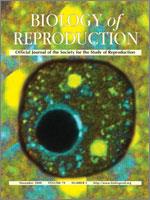The present study was conducted to apply an interspecies germ cell transfer technique to wild bird reproduction. Pheasant (Phasianus colchicus) primordial germ cells (PGCs) retrieved from the gonads of 7-day-old embryos were transferred to the bloodstream of 2.5-day-old chicken (Gallus gallus) embryos. Pheasant-to-chicken germline chimeras hatched from the recipient embryos, and 10 pheasants were derived from testcross reproduction of the male chimeras with female pheasants. Gonadal migration of the transferred PGCs, their involvement in spermatogenesis, and production of chimeric semen were confirmed. The phenotype of pheasant progenies derived from the interspecies transfer was identical to that of wild pheasants. The average efficiency of reproduction estimated from the percentage of pheasants to total progenies was 17.5%. In conclusion, interspecies germ cell transfer into a developing embryo can be used for wild bird reproduction, and this reproductive technology may be applicable in conserving endangered bird species..
How to translate text using browser tools
1 November 2008
Reproduction of Wild Birds via Interspecies Germ Cell Transplantation
Seok Jin Kang,
Jin Won Choi,
Sun Young Kim,
Kyung Je Park,
Tae Min Kim,
Young Mok Lee,
Heebal Kim,
Jeong Mook Lim,
Jae Yong Han
ACCESS THE FULL ARTICLE

Biology of Reproduction
Vol. 79 • No. 5
November 2008
Vol. 79 • No. 5
November 2008
assisted reproductive technology
chicken
developmental biology
gamete biology
interspecies germ cell transfer
pheasant
Primordial germ cell




